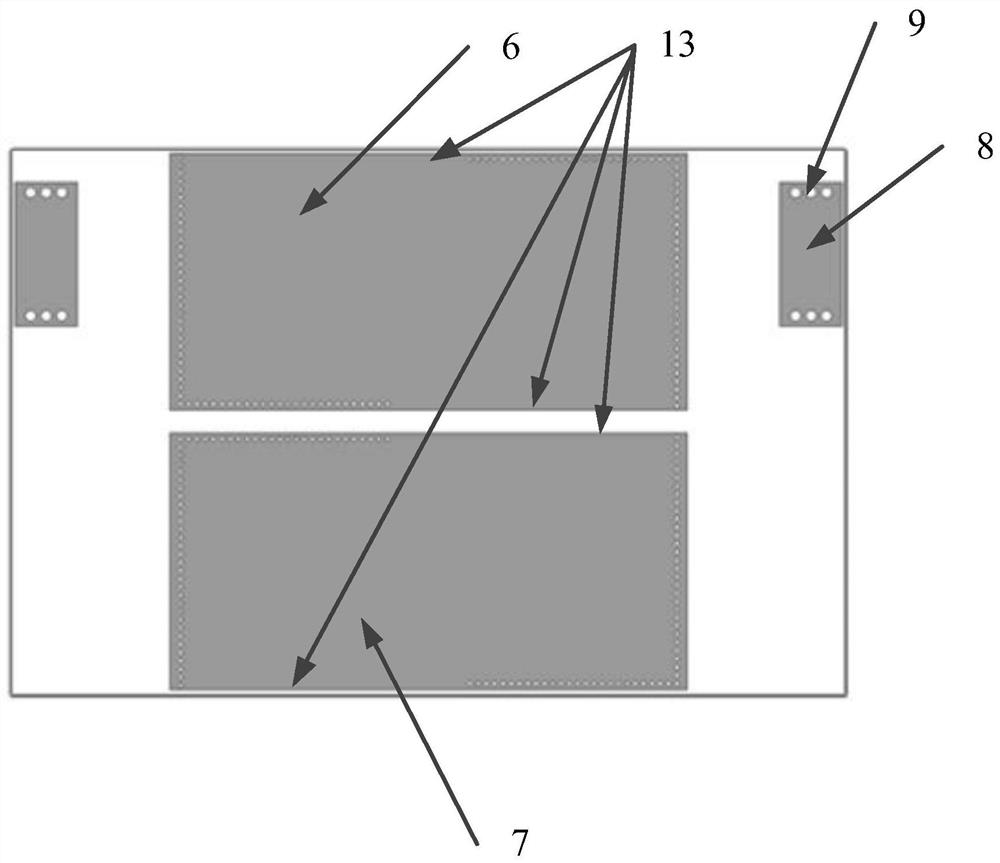A High Common-Mode Rejection Ratio Differential Antenna Based on Half-Mode Substrate Integrated Waveguide
A technology of half-mode substrate integration and high common-mode rejection, which is applied in the field of antennas and electromagnetic waves, can solve problems such as reducing antenna radiation efficiency, improve beamwidth consistency, improve antenna performance, and avoid feeding network intersections.
- Summary
- Abstract
- Description
- Claims
- Application Information
AI Technical Summary
Problems solved by technology
Method used
Image
Examples
Embodiment Construction
[0036] The reconstructed half-mode substrate-integrated waveguide cavity has the same resonant frequency and the radiating magnetic walls 13 at opposite positions,
[0037] As shown in Figure 6, Figure 6(a) is the radiation pattern of the reconstructed half-mode substrate integrated waveguide cavity, and the antenna is only at a distance of two
[0038] As shown in FIG. 7, FIG. 7(a) is a schematic diagram of the electric field distribution of the perturbation via 11 not loaded with metal. The present invention uses a cavity
[0040] As shown in Figure 10, Figure 10(a) shows the E-plane and Figure 10(b) shows that the cross-polarization of the H-plane is -43.3 dB, respectively
[0042] The above are only preferred embodiments of the present invention, and it should be understood that the present invention is not limited to those disclosed herein.
PUM
| Property | Measurement | Unit |
|---|---|---|
| dielectric loss | aaaaa | aaaaa |
Abstract
Description
Claims
Application Information
 Login to View More
Login to View More - R&D
- Intellectual Property
- Life Sciences
- Materials
- Tech Scout
- Unparalleled Data Quality
- Higher Quality Content
- 60% Fewer Hallucinations
Browse by: Latest US Patents, China's latest patents, Technical Efficacy Thesaurus, Application Domain, Technology Topic, Popular Technical Reports.
© 2025 PatSnap. All rights reserved.Legal|Privacy policy|Modern Slavery Act Transparency Statement|Sitemap|About US| Contact US: help@patsnap.com



